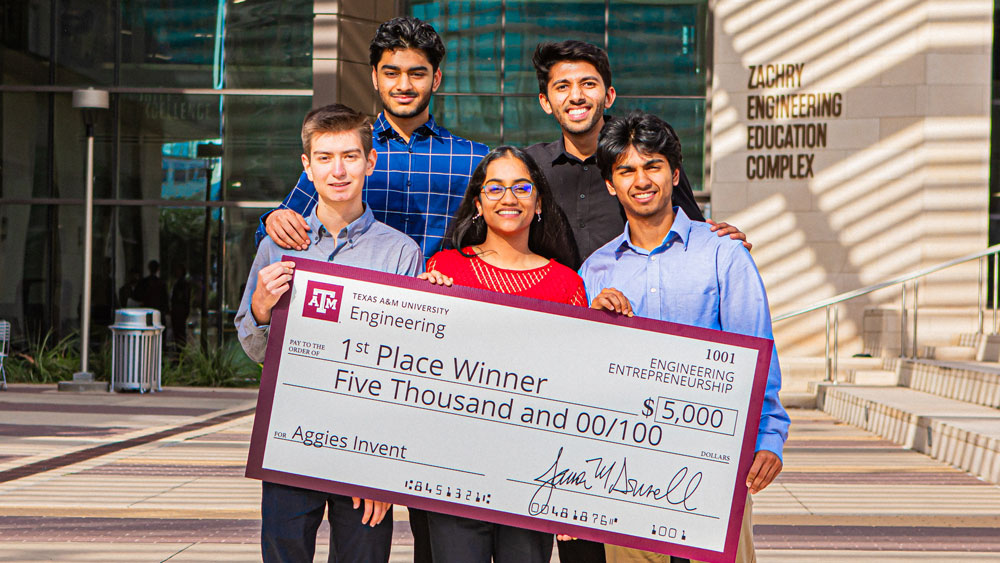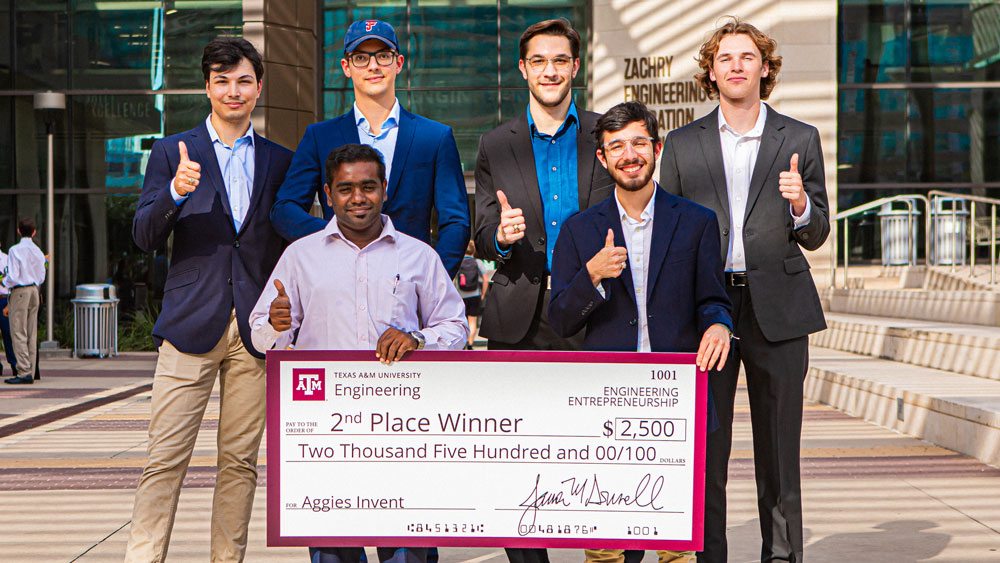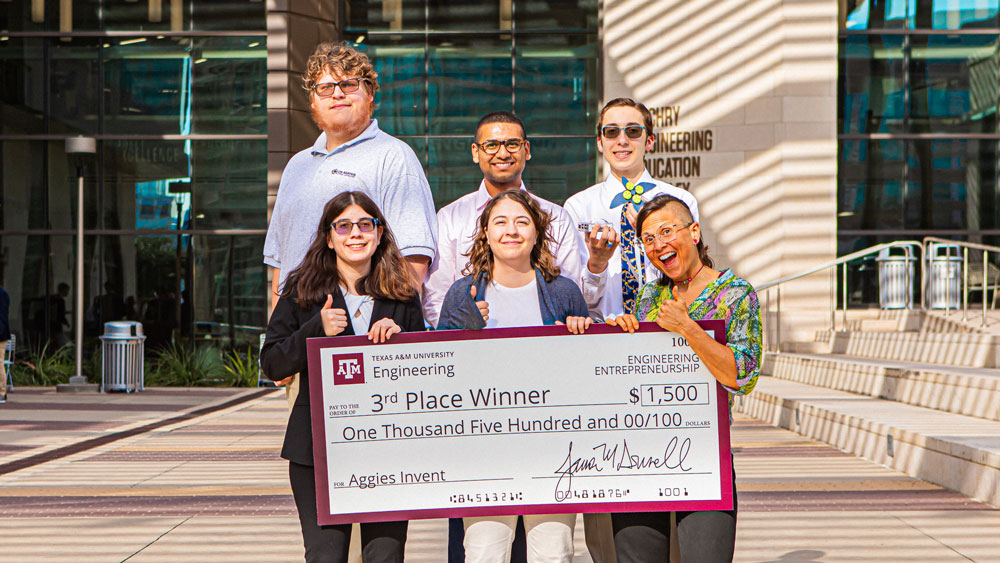
Over 40 students from the College of Engineering at Texas A&M University expanded their creativity, intellect and communication skills during the annual Aggies Invent held Sept. 8-10. The 48-hour design experience provided a unique platform for students to hone their skills and address pressing real-world problems through innovation.
This year’s event focused on “needs statements,” issues that were caused both by technology and the lack thereof.
Electronic Systems Engineering Technology sophomore Rhea Kaithal, a member of the winning team, “Team Face,” explained her team’s objective was to address the threat that artificial intelligence (AI) poses to national security.
“Our solution was a user-ended design that targeted deepfake technology created by malicious AI systems. Our technology prevents users from being wrongly informed by malicious AI content and prevents the spread of rapid misinformation,” Kaithal said.
The winning team was awarded a $5,000 prize. The second and third-place teams were awarded $2,500 and $1,500, respectively.

Mechanical engineering senior Samuel Hebert, a “Team Metal GPT” member who won second place in the competition, described their needs statement to facilitate the rapid manufacturing of high-quality parts at Sandia National Labs.
“Our solution for that was to use a 3D printing method called WLAN and any current sensors to detect any defects in the material as it’s printed,” Hebert said. “This was a really fun experience, and we got to learn a lot about the entire process of developing and design. It was a very informative experience.”

Senior nuclear engineering student Shane Olson, a member of “Team Birds Aren’t Real,” explained that their task was to characterize items of interest in the ocean. The team proposed a prototype device to solve this problem with a bird-like drone that would be capable of flying over the seas in a covert manner while relaying high-quality images back to base. The team won the third-place prize at the event.
"You really have to come with a creative mind when you’re looking to solve problems,” Olsen said.
Participating students were able to engage in friendly competition, while also gaining valuable insights and better understanding of their chosen industry.
Mark Martin, a level-one manager for a chemical design group with 34 years working at Sandia National Labs, was a first-time judge at the event.
“I was impressed with the unique solutions that the students were coming up with,” Martin said. “These are some real unique solutions that I think have good applicability. The next generation folks are real sharp.”